Some of the biographies of the world poet Rabindranath Tagore
Rabindranath Tagore, who composed the national anthem of India and won the Nobel Prize for Literature. He was a Bengali poet, Brahma Samaj philosopher, visual artist, playwright, novelist, painter and a musician. He was a cultural reformer. Who corrected Bangla art by revolting against the restrictions of classical customs of Bengali artwork. Although he was a polymanath, his literary works alone enough to make him the best person to ever be listed. Even today, Rabindranath Tagore is often considered for his poetic songs, both of which are both spiritual and elegant. He is one of their great minds, before his time, That's why Albert Einstein is considered as a clash between science and spirituality in his meetings with Einstein. Rabindranath Tagore was interested in spreading his ideology in other parts of the world. Thus, lectures in countries like Japan and the United States. Soon, his work was praised by people from different countries, and finally he became the first non-European to win the Nobel Prize. In addition to John Jan Manna (National Anthem of India), his essay 'Amr Shonar Bangla' was adopted as National Anthem of Bangladesh, and the national anthem of Sri Lanka was inspired by one of his works.
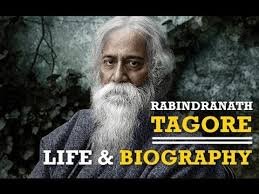
source: google.com
Biography of Rabindranath Tagore is the best example
Early life and early life
Fame and international recognition
Political opinion
His action theme
Major work
Awards and achievements
Personal Life and Succession
Insignificant matter
The 10 best known facts about Rabindranath Tagore
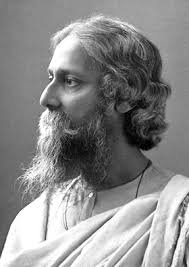
source: google.com
The details of the incident
Date of birth: May 7, 1861
Birthplace: Calcutta, British India
Date of death: 7 August, 1941
Place of death: Calcutta, British India
Occupation: writer, music composer, playwright, editor, painter
Spouse: Mrinalini Devi
Children: Renuka Thakur, Shamindranath Tagore, Mira Thakur, Rathindranath Tagore and Madhurlata Thakur
Father: Debendranath Tagore
Mother: Sarada Devi
Award: Literature Nobel Prize (1913)
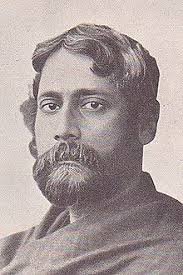
source: google.com
Childhood and early life
Rabindranath Tagore was born on 7 May 1862 in Jorasanko Palace (home of Tagore's family) in Calcutta, Devendranath Tagore and Sarada Devi. She is the youngest boy in thirteen children. Although the Tagore family had many members, he was mostly raised by slaves and housewife, when he lost his mother at a young age and his father was a traveler. At a very young age, Rabindranath Tagore was part of the renaissance of Bengal, which actively participated in his family. He started writing poems at the age of 8 and he was also a child. He began to write art works on tender, he started publishing poetry under the pseudonym Vanusima, from age and age of Solar. In 1877, he compiled short stories, 'Bhirchari' and 'Sangeetya Music' in 1882.
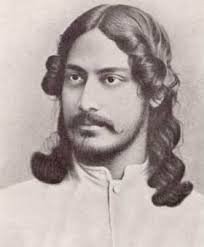
source: google.com
He took inspiration from Kalidas's classical poems and was associated with his own stories. His other influences and inspiration came from his brothers and sisters. His elder brother Dwijendranath was a poet and philosopher, and another of his followers, Satyendranath was a highly respected post. His sister Sudarshan Kumar was a well-known novelist. Rabindranath was mostly a tutor and was trained by his brothers on gymnastics, martial arts, art, physiology, literature, history and mathematics among other things. In 1873, he traveled the country with his father and for many months. During this visit, he collected knowledge about various subjects. In Amritsar, he learned to learn Sikh religion for his stay, an experience which he later used to write six poems and many articles of scripture.
Education
Rabindranath Tagore's traditional education began in a public school in Brighton, East Sussex, England. He sent him to England in 1878, because his father wanted him to be a barrister, in support of him while in England he joined his nephew, nephew and his relatives with sisters. Rabindranath always ignored formal education and thus did not show interest in learning from his school. Later he was admitted to the University College in London, where he was asked to learn the law. But he dropped out again and learned Shakespeare's various works himself. After learning the English, Irish and Scottish literary and music fidelity, he returned to India and married Mrinalini Devi when she was only 10 years old.
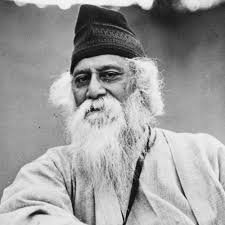
source: google.com
Shantiniketan Foundation
Rabindranath's father bought a lot of land in Santiniketan. With the idea of establishing a school for his parents' property, he shifted base to Santiniketan in 1901 and established a monastery there. It was named after a prayer meeting with the marble floor and the 'temple'. These classes are held under the tree and follow the prevalent guru-learning methods of education. Rabindranath Tagore hoped that it would be beneficial for the revival of this ancient method of education compared to modern methods. Unfortunately, his wife and two children died while in Santiniketan and Rabindranath was left-handed. Meanwhile, his works became more popular among Bengali and foreign readers Eventually he was recognized worldwide and in 1913, Tagore received the Nobel Prize in Literature, Asia's first Nobel Laureate
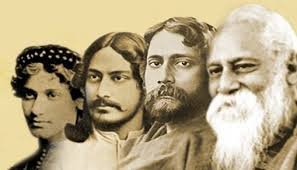
source: google.com
World tour
Since Rabindranath Tagore believed in the idea of a world, he made a world tour to try to spread his ideology. He also worked with him, his translated works, which attracted the attention of many famous poets. He also spoke in countries like USA and Japan. Later, Rabindranath found places like Mexico, Singapore and Rome, where he met national leaders and met with important figures like Einstein and Mussolini. In 1927 he started the Southeast Asian tour and was inspired by his wisdom and literary work. Rabindranath used this opportunity to interact with many world leaders, problems between Indians and the English. Although his primary goal was to end nationalism, Rabindranath realized with time that nationalism was stronger than his ideology and thus became more atrocity towards him. At the end, he spread thirty countries to five continents.
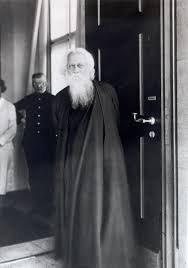
source: google.com
Literary works
In his lifetime Rabindranath Tagore wrote several poems, novels and short stories. Although he started his education at an early age, his desire to do more literary work improved even after his wife and children's death. Some of his literary works have been mentioned below:
Short story - Rabindranath started writing for his childhood when he was just a daughter. He started writing with 'Beggar', in his early stages of his career, his stories reflect them, in which he grew up. He was also convinced of the inclusion of social problems and problems of poor people in his stories. He also wrote about the negative aspects of Hindu marriage and other customs which was part of the tradition of the country. Some of his stories include 'Kabuliwala', 'Kusitta Pasan', 'Aatosu', 'Haimani' and 'Mussalmani Golpo'.
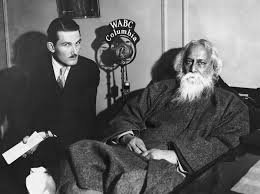
source: google.com
Novel - It is said that most of his novels are captured in his works. One of the reasons for this can be his unique style of describing his story, which is still difficult to understand by contemporary readers, during which time the readers should be left alone. His works talked about the risks of nationalism in other relevant social temples. His novel 'Shesh Kobita' describes his story through the poem and the main parables of the main hero. He gave it a satirical element by living with his characters in an old poem named Rabindranath Tagore. One of his most famous novels is 'Naokadubi', 'Gora', 'Chaturanga', 'Ghar Baar' and 'Jujjog'.
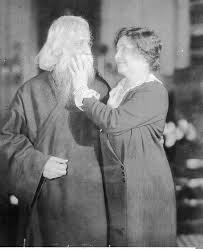
source: google.com
Poetry - inspired by ancient poets like Rabindranath Kabir and Ramprasad Sen, and thus his poems are often compared to the 15th century classical poets. By throwing his own style of writing, he also wrote the writings of ancient Indian poets, not just his work to the people. Interestingly, he wrote a poem in 1893 and addressed a future poet through his work. While reading poetry, poet also was born in memory of Rabindranath and his works. His best works include 'Balaka', 'Purabee', 'Sonar Torori' and 'Gitanjali'.
Rabindranath's writings adaptation
Renowned filmmaker Satyajit Ray created many of his novels and short stories in the film. For the other filmmakers, for years, he has inspired his work and included his stories in his movies. Many of his 39 stories were created by various directors and some stories were made in the TV series. Recent film adaptations include 'detective', 'postmaster', 'jugjog', 'poems of poets' and 'tasar ki'.
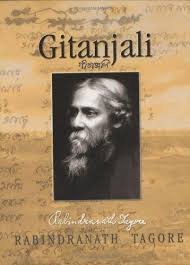
source: google.com
The last day and the death
Rabindranath Tagore spent his last four years in permanent pain and was suffering from two prolonged illnesses of illness. In 1937, he went into a comatose condition, which relapsed three years later. Rabindranath died in the same Jorasanko Palace on August 7, 1941, for a long period of suffering.
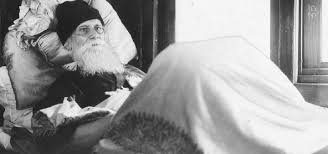
source: google.com
Succession
Since Rabindranath Tagore changed the path of Bengali literature, many of them left the infinite faith. Apart from many statues and statues made in many countries, many years of events are revered by the great writer. Many of their work became international, thanks to a translation of translations by many famous international writers. There are five museums dedicated to Thakur, three of them are located in India, the remaining two are in Bangladesh. The museums keep his famous works, and millions of people visit every year.
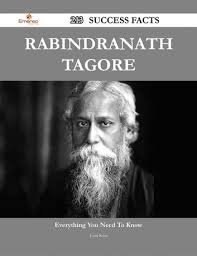
source: google.com
Early life and early life
Rabindranath Tagore (Rabindranath Tagore) was a devout Hindu philosopher and founder of religious movement, 'Brahma Samaj'.
Rabindranath Tagore was very young as Rabindranath, when his mother died and his father spent most of the time, he was raised with domestic help.
Rabindranath was an artist-lover who was known in Bengal for his influence on Bengali culture and literature Born in such a family, he was introduced to theater of the world, (from the regional and the western, both joint and local) and literature from an early age.
When he was eleven years old, his father visited all over India. During this visit, he read the famous writers' writings, including Kalidas, a celebrated classical Sanskrit poet. After returning, in 1877 he wrote a long poem in Mathili style.
In 1878, he went to Britain, East Sussex, England for law studies. He joined the University College London for some time, which led him to study Shakespeare's works. He returned to Bengal in 1880 and received his degree in hopes of absence of elements of Bengali and European heritage in his literary works.
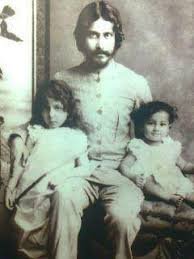
source: google.com
In 1882, he wrote his most famous poem in the book 'Nirjahar Swapanbhanga'.
In 1884, he committed suicide to his close friend and trusted person Kadmabari. When this incident broke down, he avoided classes in school and spent most of his time swimming in the Ganges and walked through the mountains.
Poetry of Rabindranath Tagore
In 1890, his poem 'Mansi' was published in Sheledh in an estate of his ancestor. It was proved effective from 1891 to 1895, in which he collected the three short stories 'Galappaguchcha'.
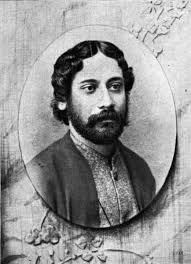
source: google.com
In 1901, he went to Santiniketan, where he wrote 'Nyayyya', published in 1906 and wrote 'Shay', published in 1906. Then a number of his works were published and he was very popular among the Bengali readers.
In 1912, he went to England and took a chef from his translated works with him. There he presented his writings to several well-known writers, including William Butler Yeats, Ezra Pound, Robert Bridges, Ernst Rice and Thomas Starr Moore.
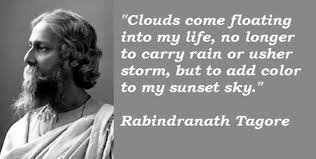
source: google.com
Written by Rabindranath Tagore
After receiving the Nobel Prize in Literature, 'Gitanjali: Music Offer' and later in 1913, his popularity increased in English-speaking countries.
In 1915, the British Crown was given a knighthood, which he released after the 1919 Jallianwala bug massacre.
From May 1916 to April 1917, he stayed in Japan and the United States, where he delivered lectures on 'Nationalism' and personality.
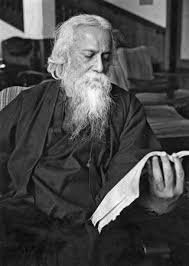
source: google.com
In 1920 and 1930, he traveled extensively throughout the world; During his extensive tour of Latin America, Europe and Southeast Asia tour, he earned a constant following and endless admiration.
Songs of Rabindranath Tagore
Rabindranath's political outlook was a little ambiguous. Although he had forgiven imperialism, he maintained the continuation of British administration in India.
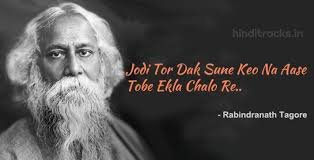
source: google.com
He criticized Mahatma Gandhi's Swadeshi Movement for his work, "The Cult of the Charka", published in September 1922. He believed in the co-existence of the British and Indians and said that British rule in India was "our social disease of political signs"
The words of Rabindranath Tagore
He never supported nationalism and was one of the biggest challenges facing humanity. In this context, he once said, "A nation is an aspect that an entire population assumes to be organized for a mechanical purpose". Nevertheless, he occasionally pursued the massacre of Jallianwala, in support of the Indian Independence Movement and he even left his knighthood on 30th May 1919.
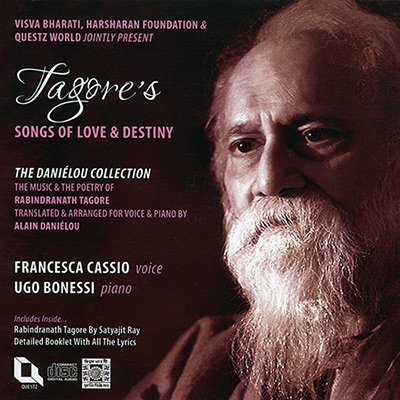
source: google.com
His view of entire India is not based on independence from foreign rule, but based on the release of his citizens' thoughts, actions and conscience.